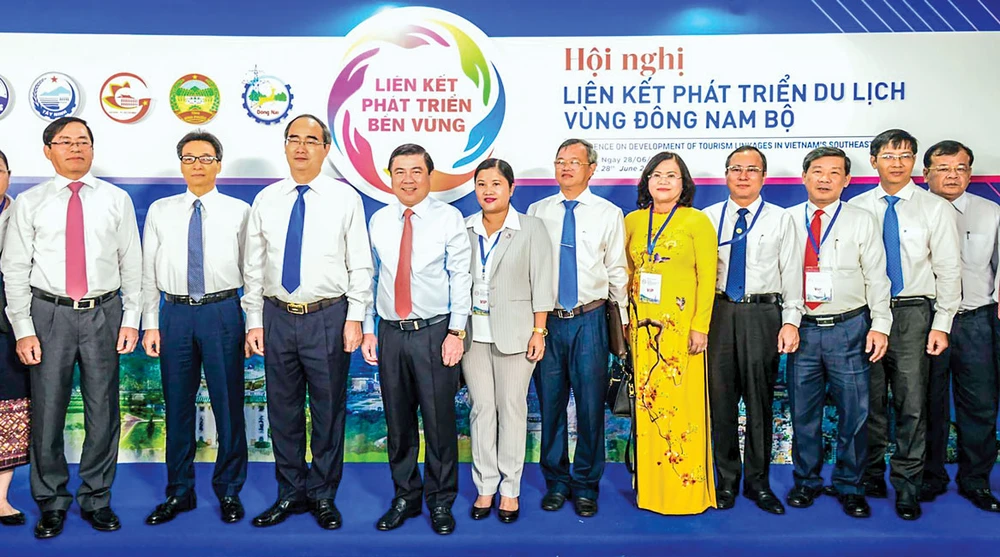
Several inter-country tours are now being prepared to meet this new demand, and Ho Chi Minh City is promoting joint regional tours for travelers looking to sightsee new places or simply to relax. Most recently, Ho Chi Minh City has joined hands with the Provinces of Ba Ria-Vung Tau, Binh Duong, Binh Phuoc, Dong Nai and Tay Ninh to develop strong regional tourism packages.
Speaking with Saigon Investment, Mr. BUI TA HOANG VU, Director of the Department of Tourism in Ho Chi Minh City, said that first they must affirm that the Southeast Region is rich in tourism resources, as previously there has been no such attempt at developing these areas.
According to Mr. Bui Ta Hoang Vu, Ho Chi Minh City is now playing a central role after the realization that there is more of an urgent need to connect with other provinces in the region to create interesting tourism products in line with new tourist trends. That is the main reason for the cooperation between several southern regions in developing Southeast tourism packages.
In the first instance, the regions by way of location complement each other. In order to unify complementary tourism products, a tourism delegation of Ho Chi Minh City and five provinces conducted surveys of destinations in each locality to create interesting tour itineraries.
Secondly, by linking promotional activities through many channels, such as participating in fairs at home and abroad, or on media channels, the products can reach a diverse number of intended visitors. For instance, if visitors to Ho Chi Minh City want to have a beach holiday they can link with a tour going to Ba Ria-Vung Tau. If tourists want to visit a historical religious site, then the unique architectures in Toa Thanh Cao Dai in Tay Ninh can prove to be attractive, while Binh Phuoc can offer agro-forestry sites, Binh Duong has a trade village, and Dong Nai has relics and architecture dating hundreds of years.
Thirdly, it is important to share links in training human resources, a very decisive factor in tourism activities. Ho Chi Minh City has the advantage of being a national training center, is well versed in tourism and can provide strong link support to other provinces. In turn, local artisans across many fields can enliven tourism activities in Ho Chi Minh City.
Fourthly, cooperation calls for huge investment in tourism infrastructure. Ho Chi Minh City and localities annually organize forums calling for investments in tourism so that investors can access information of the whole region, and the possibility of expanding tourism development infrastructure in each locality.
Fifthly, sharing information jointly in management and policy-making to develop a smart tourism infrastructure is absolutely imperative.
JOURNALIST: - Sir, in some localities tourism products are not really attracting many tourists. Does this make it difficult for businesses to build online inter-regional tours?
Mr. BUI TA HOANG VU: - In tourism development there can be no uniformity between localities. There are places with many outstanding products but also where new products need to be exploited. When linking travel, we see the potential in all products. Enterprises also recognize popular tourism potentials and are building attractive inter-regional tours based on this information, such as tours of Ho Chi Minh City-Tay Ninh that have only just started.
The formation of regional links in tourism comes from the needs in the business. Especially in the context of domestic tourism becoming an important target to recover tourism in the aftermath of the pandemic. In parallel to forming complementary tourism products, the connection between provinces and cities will also encourage more local people to travel. Ho Chi Minh City also wants to attract tourists from other localities to come to taste the cuisine, enjoy a drink, shop in its markets and malls or even stay for the best medical attention.
- With Ho Chi Minh City playing a leading role in building tourism links, what is the City planning on the development of new tourism products?
- In the process of creating interesting tourist links with regions, we are facing a challenge in lack of uniformity in tourism infrastructure as it is not easy to create products of uniform quality. In addition, we also have difficulty in connecting traffic in waterways and roads, which affects costs when planning tour routes. Another difficulty is a similarity in geography, soil, and cultural regions, so creating products that are different and competitive as well as attractive also bring challenges for product designers.
According to an evaluation done by a German Consultancy Group that is planning a tourism development strategy for Ho Chi Minh City, we need to refresh and upgrade the products altogether, and the City's advantages in cultural history, cuisine and shopping must be highlighted. In a survey of visitors to Ho Chi Minh City, 54% of foreign visitors come to the City because of its past history.
Ho Chi Minh City is also a base for the convergence of workers, experts, artisans from many regions. They come to study, work and bring with them part of their own indigenous regional culture. In particular, Ho Chi Minh City has many shopping centers, and many traditional markets to meet the diverse needs of visitors. This is an advantage for the City and in the future, the City also plans to develop more medical tourism products. We are trying to survey, evaluate, and then recommend to visitors the unique features of Ho Chi Minh City.
- Thank you very much.




















